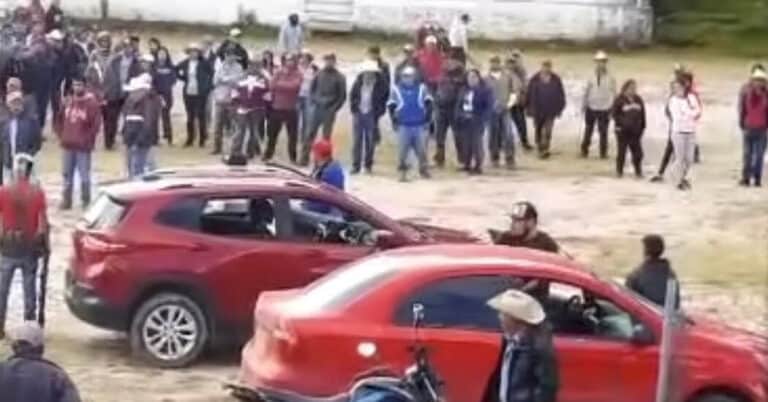A clash between gunmen and members of a small farming community in central Mexico has left at least 14 people dead, the state authorities said Saturday, casting the violence as a gang extortion attempt that backfired when residents fought back.
Officials said the dead from the clash on Friday included four locals in the community, the town of Texcapilla, and 10 people suspected of being cartel members; seven other people were injured and more remained missing.
Delfina Gómez, the governor of the State of Mexico, where Texcapilla is, said Saturday morning at a news conference that she had asked for security to be reinforced in the region.
“These events do not paralyze us; on the contrary, they reaffirm our commitment to improve the security conditions of our beloved state,” she said. “We will continue to work to ensure that episodes like this do not happen again.”
The state’s security secretary, Andrés Andrade Téllez, said that on Thursday the military had received reports about armed men belonging to a cell of La Familia Michoacana cartel who were demanding payments from delegates of different communities about 30 miles from Texcapilla.
The violence the next day, caught on a video that The New York Times independently verified, took place in the town’s sports field. Dozens of villagers, machetes and hunting rifles in hand, approach the gunmen as discussions become heated. Then the first shots are fired. Some people run. Others chase down the suspected gang members and attack them with machetes.
It was an example of how resentment can motivate people to fight back against the gangs that torment them on a daily basis.
“The communities do this from a place of feeling fed up, of desperation,” said Sandra Ley, a program coordinator for México Evalúa, a research institute focused on public security policies. “From that position of ‘no more.’”
Recently, extortion has become increasingly common in Mexico as criminal gangs “have been morphing away from drug trafficking towards a territorially based extraction model,” said Falko Ernst, a senior analyst for the International Crisis Group, an organization that promotes conflict avoidance.
Extortion rates reached record levels last year, with an average of almost eight extortion cases reported per 100,000 inhabitants, according to data from state prosecutors’ offices and the National Institute of Statistics and Geography. The high during the previous administration was five cases per 100,000 inhabitants.
“There have been quite a few reactions to that. Some more organized. Some more spontaneous,” Mr. Ernst said. “But especially under this administration, the territorial control of these groups has been granted greater leeway, greater passiveness through the ‘hugs not bullets’ security strategy.”
Since he took office in 2018, President Andrés Manuel López Obrador has vowed that his government would address the root causes that fuel criminality. But his efforts have so far done little to tame Mexico’s extraordinary levels of violence or diminish the cartels’ expanding power, even as the military and the Mexican National Guard are deployed across the country.
“There has not been a social crime prevention policy,” Ms. Ley said. “Organized crime is winning.”
The eruption of violence in Texcapilla was probably the result of tensions that had been building up as locals were preyed upon by criminal groups, experts say. But the animosity toward the cartels is hardly unique.
“Hopefully, we won’t be caught by surprise again by something like this in other places that are equally besieged and fed up with this situation,” Ms. Ley said. “It can’t be that we let that tension build up until we have 14 dead.”


